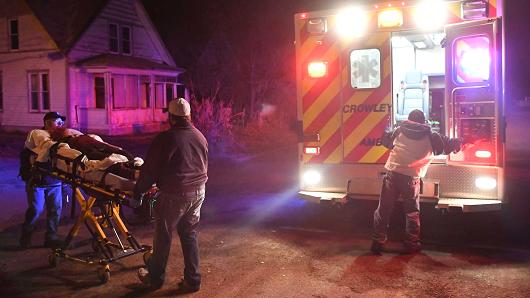
RJ Sangosti | The Denver Post | Getty Images
Art Brubaker, left, a volunteer EMT for Crowley County Ambulance, and Justin Grafel, a volunteer driver for Crowley County Ambulance, take a resident on November 14, 2017 in Ordway, Colorado.
The number of people using ambulances dropped “substantially” in hundreds of U.S. cities after Uber introduced its ride-hailing service to those locales, new research has found.
The findings suggest that UberX’s entry into a city can decrease “uncessary ambulance usage” — which in turn could lead to a drop in wait times for ambulances, according to the study’s authors.
And it also could provide financial savings for patients, since a trip using Uber costs much less than the typical ambulance ride, a paper on the study noted.
The research was conducted by David Slusky, a University of Kansas economics professor, and Dr. Leon Moskatel of Scripps Mercy Hospital in San Diego.
Slusky and Moskatel looked at what happened to ambulance usage rates from 2013 to 2015 as the ride-hailing service UberX was rolled out into nearly 800 cities in 43 states.
Before UberX was introduced into a given city, the rate of ambulance usage among residents tended to be fairly constant, according to the authors.
But after Uber was introduced, the authors found “at least a 7 percent decrease in the ambulance rate.”
“This decrease likely caused a reduction in wait time for the remaining ambulance volume,” they wrote.
“Given that even a reduction of a few minutes can drastically improve survival rates for serious conditions … this could be associated with substantial welfare improvement.”
Earlier this year, the authors noted, separate research found that since the the introduction of the Affordable Care Act, ambulance response times had slowed by 19 percent. Obamacare, as the ACA is formally known, led to the expansion of health coverage to about 20 million Americans.
The authors also noted: “Emergency medical transport in an ambulance can easily exceed over a thousand dollars, usually with great surprise to the patient — and with insurance often only partially covering the expense or outright refusing to pay for transport deemed not medically necessary.”
 EU News Digest Latest News & Updates
EU News Digest Latest News & Updates



